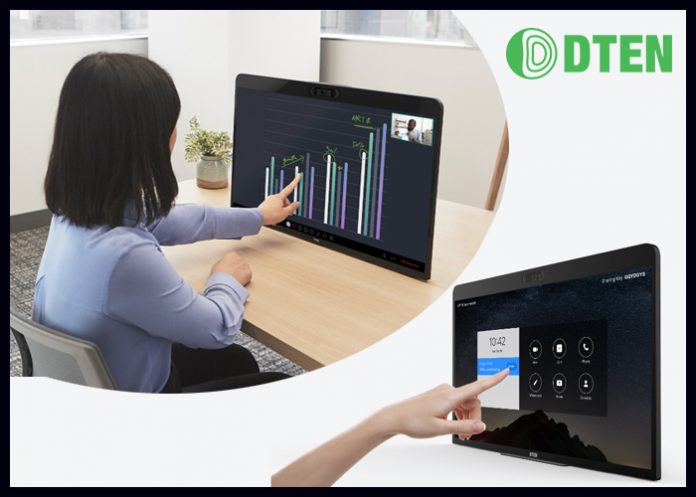Zoom, video conference app was founded in April 2011 by Eric Yuan and launched in 2013. Beginning of 2020 zoom app saw a significant global increase in usage following the world pandemic. Zoom software saw a major increase in usage for a remote network, distance education and online social meetings. This software has faced more privacy and security issues and they fixed this issue on May 7, 2020, by announcing that it had acquired Key base, specializing in end to end encryption. It came out with a new idea Zoom from home to support business professionals working remotely and the device is set to launch by August 2020.
Zoom for the house is a branded device manufactured by DTEN ME. It’s not a full-fledged PC, neither is it a mere display: it’s a “personal collaboration device” with a PC-like:
- 27-inch screen display
- Three built-in wide-angle cameras for high-resolution video
- An 8-microphone array for crystal-clear audio in meetings and phone calls
- A touch display for interactive screen sharing, whiteboarding, annotating, and ideation.
To create an immersive and productive workspace for the business professionals working remotely they have introduced some top features:
- Enhances the Zoom Experience
- Personalization
- Flexible Management Options
- Zoom for Home Design
The statement given by the company is “Zoom for Home – DTEN ME” works right out of the box and seamlessly connects for anyone with a Zoom Meeting license.
Zoom for the house is also compatible with all Zoom Rooms Appliances, including other hardware solutions from Neat and Poly, allowing users to pick the hardware they have to make the perfect work-from-home communications experience across spaces like living rooms and mounted displays.
Jeff Smith, Head of Zoom says that the idea is to offer an appliance that you can pull out of the box and it’s ready to use with minimal fuss. He says this is often designed with simplicity in mind, in order that you pull it out of the box and launch the interface by entering a pairing code on a website on your laptop or mobile phone. Once the interface appears, you merely touch the function you would like, like making a call or starting a gathering, and it connects automatically. This works like Bluetooth, but rather than sending out a radio wave, it sends out a sound between 18 and 22 kHz, which most of the people can’t hear, to attach the two devices. This device is currently available for pre-order and is expected to ship by August.

